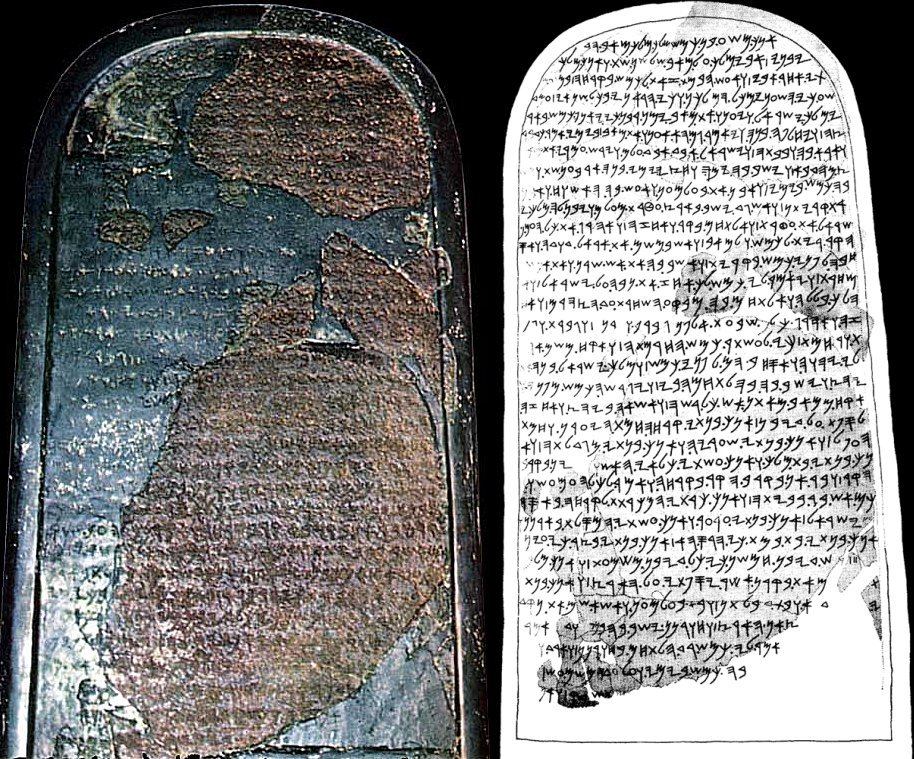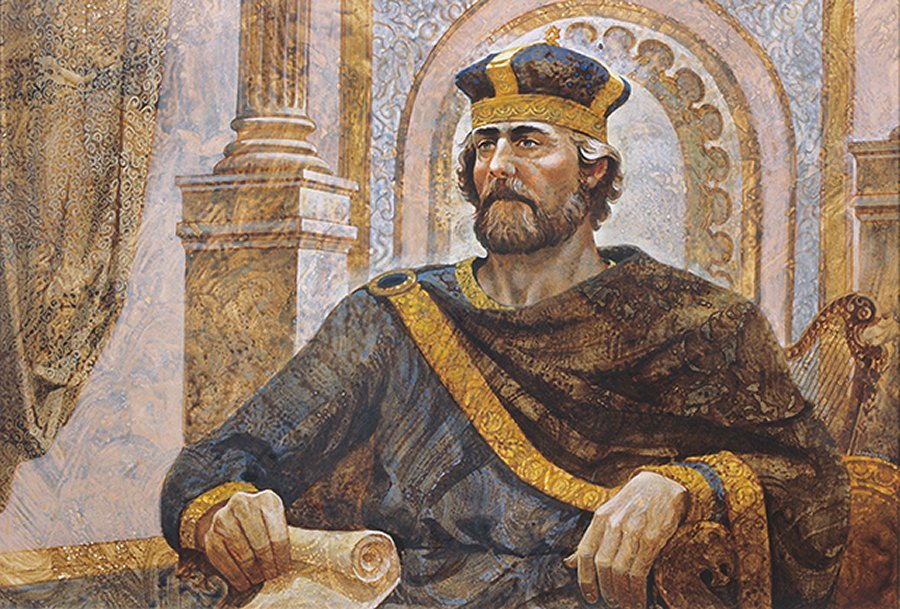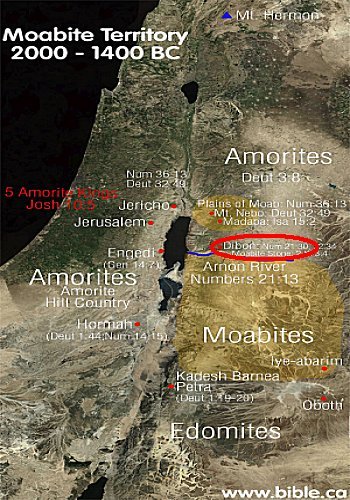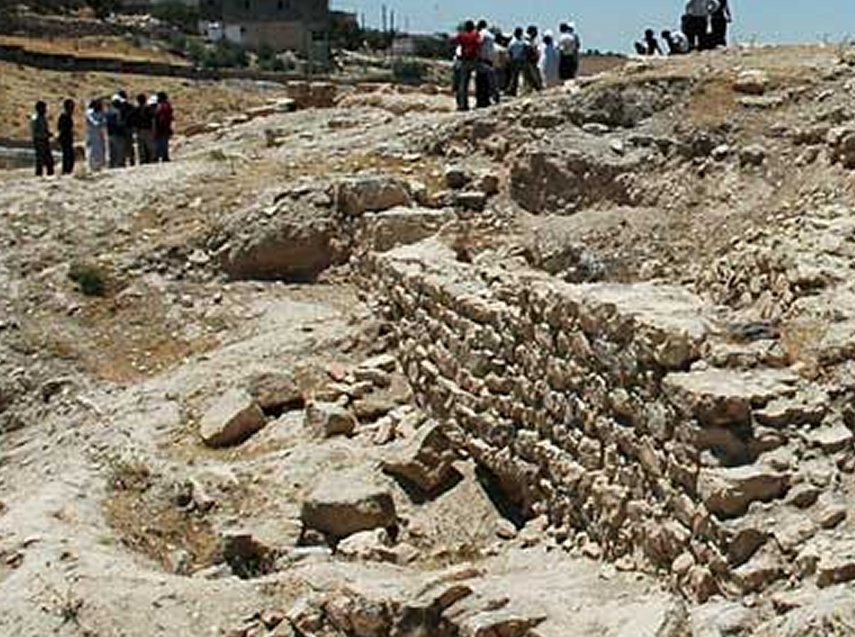Mesha Stele: One Of The Most Valuable Biblical Artifacts
A. Sutherland - AncientPages.com - Mesha Stele, which is also known as the Moabite Stone, is one of the most valuable Biblical artifacts.
It was accidentally discovered among the ruins of Dhiban (Biblical "Dibon," capital of Moab), 20 miles east of the Dead Sea, by a German missionary F. A. Klein in 1868.
The artifact was discovered in 1868 about 20 miles east of the Dead Sea. What is most amazing is that it mentions "Israel," "Yahweh" and the "House of David." Image: Bible History
The artifact was a bluish basalt stone, about 4 feet high (about 142cm) and 2 feet wide, and 14 inches thick. It was erected and inscribed by Moabite King Mesha.
When it was found the Berlin Museum quickly negotiated for it while the French Consulate at Jerusalem offered more money.
Considered a valuable and spectacular find, the stele became an object of great interest of the Berlin Museum and the French Consulate at Jerusalem. The local Bedouin tribe was in possession of the artifact, but fearing the loss of it, decided to destroy it. They hang it on a rope and repeatedly dipped it in fire and water until it fell apart.
Most of the inscriptions, over thirty verses, were later reconstructed from the recovered fragments and assembled by Charles Clermont Ganneau, a renowned French Orientalist and archaeologist.
King David Enthroned, by Jerry Harston
The inscription has 34 lines, and it is the most extensive inscription ever recovered that refers to ancient Israel. It was written in Paleo-Hebrew alphabet (a variant of the Phoenician alphabet).
Not much is known about King Mesha, one source is the Hebrew Bible and the other is the Mesha Stele saying:
"I am Mesha, son of Chemosh[-yatti], the king of Moab, the Dibonite. My father (had) reigned over Moab for thirty years, and I reigned after my father. And I made this high place for Chemosh in Qarcho … because he has delivered me from all kings, and because he has made me triumph over all my enemies…." and another source is the Hebrew Bible:
"Now Mesha king of Moab was a sheep breeder, and he regularly paid the king of Israel one hundred thousand lambs and the wool of one hundred thousand rams. But it happened, when Ahab died, that the king of Moab rebelled against the king of Israel." (2 Kings 3:4-27).
The king's name: "Mesha" is based on the Hebrew word "to save", but it has also been suggested that his name may be related to the Hebrew "Moshe" (Moses). While his personality is rather obscure, he left a clear message on to the stone, which gives us a glimpse of historical events, which were important for the Moabite Kingdom.
The text is a reminder of Mesha's heroic struggles with King of Israel, Omri and his son Ahab and how he got freed from the influence of Israel after many years of captivity. As we remember, the Bible gives the Messiah a similar story (2 Kings 3) but it is not clear, however, whether it describes the same battle as the Mesha Stele does.
The inscription also tells that king ordered repairs of the walls, built a palace and water tanks. It was extremely important because of the drought in Moab, (now west-central Jordan), which in Biblical times was the kingdom of the Moabites (14th century BC to 582 BC), who were closely related to the Israelites but frequently in conflict with them.
Dibon excavations. Image credit: Bible Places.com
Word: "Israel" is mentioned several times and so is "Yahweh" in verse 18:
"…And from there I took the vessels of Yahweh, and I presented them before the face of Chemosh..."
It appears that king Mesha knew about the Israelite God Yahweh and says he took "the vessels of Yahweh and presented them before the face of Chemosh", the god of the Moabites, according to the Hebrew Bible.
It is the first appearance of the name of the God of Israel in the Moabite language and Phoenician alphabet.
Moreover, line 31 is very significant because it bears the phrase the "House of David".
The existence of King David has been long questioned by scholars. When French scholar Andre Lemaire (who spent seven years studying it) was investigating the inscription, he determined that the same phrase appeared there in line 31. Lemaire was able to identify a previously faint letter as a "d" in the phrase "House of David." This phrase was used commonly in the Old Testament for the Davidic Dynasty, also referred to as the "House of David".
Much more have to be discovered to confirm the existence of the great King David, the founder of the ruling dynasty of Judah, the "House of David". So far he is mentioned in the Mesha Stele and on the pages of the Bible.
Other artifacts would confirm the existence of this historical figure of Biblical times.
The Mesha Stele is now stored in the Louvre of Paris and its copy is in the British Museum in London.
Written by – A. Sutherland - AncientPages.com Senior Staff Writer
Copyright © AncientPages.com All rights reserved. This material may not be published, broadcast, rewritten or redistributed in whole or part without the express written permission of AncientPages.com
Expand for referencesMore From Ancient Pages
-
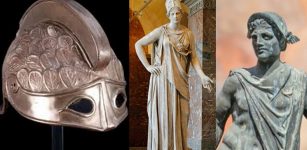 Magical Cap Of Invisibility Worn By Athena, Hades, Hermes, And Perseus
Featured Stories | Mar 25, 2019
Magical Cap Of Invisibility Worn By Athena, Hades, Hermes, And Perseus
Featured Stories | Mar 25, 2019 -
 The Word Salary Has Roots In Ancient Rome And History Of Salt
Ancient History Facts | Jun 29, 2016
The Word Salary Has Roots In Ancient Rome And History Of Salt
Ancient History Facts | Jun 29, 2016 -
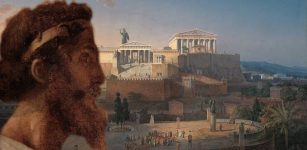 Popular Tyrant Peisistratos Tricked The Athenians To Seize Power And People Loved Him
Featured Stories | Jan 12, 2021
Popular Tyrant Peisistratos Tricked The Athenians To Seize Power And People Loved Him
Featured Stories | Jan 12, 2021 -
 Freemasons Secrets – American Democracy Is Part Of An Ancient Universal Plan – The Beginning And The Dream Of A Brotherhood Of Men – Part 1
Ancient Mysteries | Jul 12, 2018
Freemasons Secrets – American Democracy Is Part Of An Ancient Universal Plan – The Beginning And The Dream Of A Brotherhood Of Men – Part 1
Ancient Mysteries | Jul 12, 2018 -
 Cosmic Message Of The Zapotec Glyphs In The Valley Of Oaxaca – Deciphered!
Archaeology | Mar 10, 2022
Cosmic Message Of The Zapotec Glyphs In The Valley Of Oaxaca – Deciphered!
Archaeology | Mar 10, 2022 -
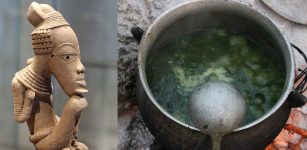 First Insight Into 3,500-Year-Old Cuisine Of The Enigmatic Nok Culture
Archaeology | Jan 17, 2022
First Insight Into 3,500-Year-Old Cuisine Of The Enigmatic Nok Culture
Archaeology | Jan 17, 2022 -
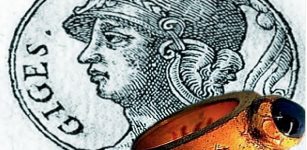 Magical Ring Of Gyges And Its Power To Be Invisible At Will
Featured Stories | Feb 16, 2023
Magical Ring Of Gyges And Its Power To Be Invisible At Will
Featured Stories | Feb 16, 2023 -
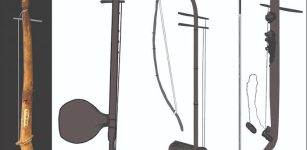 2,000-Year-Old Stringed Instrument Found In Vietnam
Archaeology | Feb 22, 2023
2,000-Year-Old Stringed Instrument Found In Vietnam
Archaeology | Feb 22, 2023 -
 500 Million Year-Old Fossils Solve A Centuries-Old Evolutionary Riddle
Archaeology | Nov 7, 2022
500 Million Year-Old Fossils Solve A Centuries-Old Evolutionary Riddle
Archaeology | Nov 7, 2022 -
 Castor And Pollux: Dioscuri Brothers Immortalized In The Night Sky In Greek Beliefs
Featured Stories | Jan 24, 2024
Castor And Pollux: Dioscuri Brothers Immortalized In The Night Sky In Greek Beliefs
Featured Stories | Jan 24, 2024 -
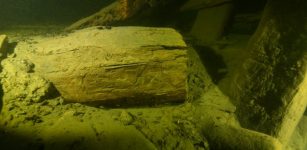 Barrels With Unique Intact Cargo Found On The Osmundvraket (Osmond Wreck)
Archaeology | Jun 7, 2024
Barrels With Unique Intact Cargo Found On The Osmundvraket (Osmond Wreck)
Archaeology | Jun 7, 2024 -
 Mysterious Crypt Points To A Rosicrucian Secret That Was Never Meant To Be Revealed
Ancient Mysteries | Aug 1, 2024
Mysterious Crypt Points To A Rosicrucian Secret That Was Never Meant To Be Revealed
Ancient Mysteries | Aug 1, 2024 -
 Rare Bronze Age Sacrificial Offerings, Including A Bent Sword Found In A Bog Near Veksø, Denmark
Archaeology | Dec 3, 2024
Rare Bronze Age Sacrificial Offerings, Including A Bent Sword Found In A Bog Near Veksø, Denmark
Archaeology | Dec 3, 2024 -
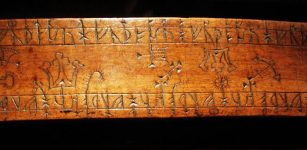 Vikings And The Runic Calendar
Artifacts | Mar 4, 2016
Vikings And The Runic Calendar
Artifacts | Mar 4, 2016 -
 Mysterious Fontainebleau Forest – Home To A Lost Civilization
Civilizations | Jun 23, 2020
Mysterious Fontainebleau Forest – Home To A Lost Civilization
Civilizations | Jun 23, 2020 -
 Riddle How Human’s Uniquely DNA Evolved Solved By Scientists
DNA | Jan 13, 2023
Riddle How Human’s Uniquely DNA Evolved Solved By Scientists
DNA | Jan 13, 2023 -
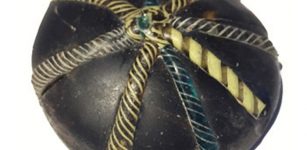 Anglo-Saxon Previously Unknown Monastic Or Trading Center – Discovered
Archaeology | Mar 7, 2016
Anglo-Saxon Previously Unknown Monastic Or Trading Center – Discovered
Archaeology | Mar 7, 2016 -
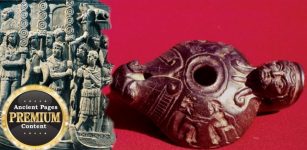 Mysterious Ancient Oil Lamps In Ohio And Wisconsin – Evidence Of Pre-Columbian Contact?
Ancient Mysteries | Dec 20, 2017
Mysterious Ancient Oil Lamps In Ohio And Wisconsin – Evidence Of Pre-Columbian Contact?
Ancient Mysteries | Dec 20, 2017 -
 Did Ancient Civilizations Possess Knowledge Of Time Travel?
Ancient Technology | Sep 17, 2018
Did Ancient Civilizations Possess Knowledge Of Time Travel?
Ancient Technology | Sep 17, 2018 -
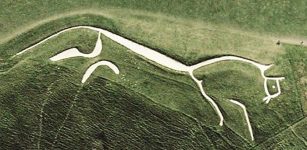 Mystery Of Prehistoric Gigantic Hill Figures Of England
Featured Stories | Sep 20, 2018
Mystery Of Prehistoric Gigantic Hill Figures Of England
Featured Stories | Sep 20, 2018

